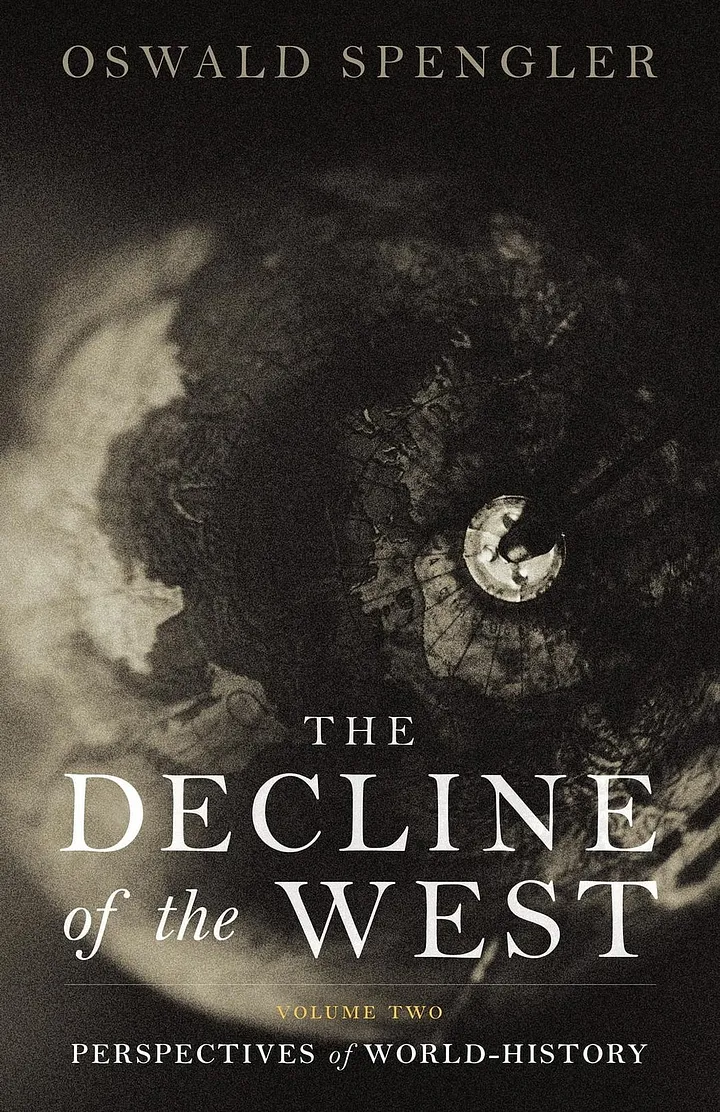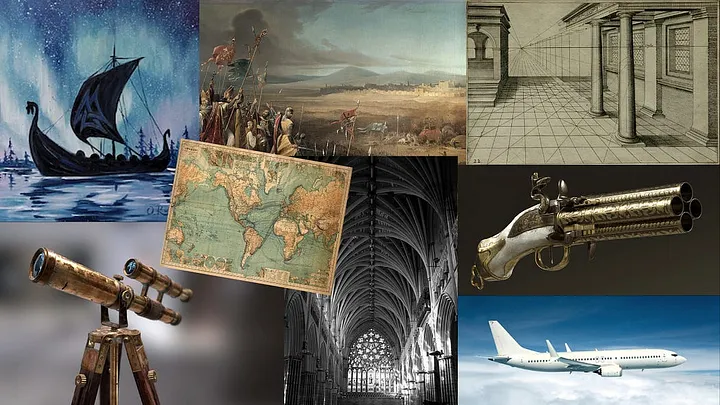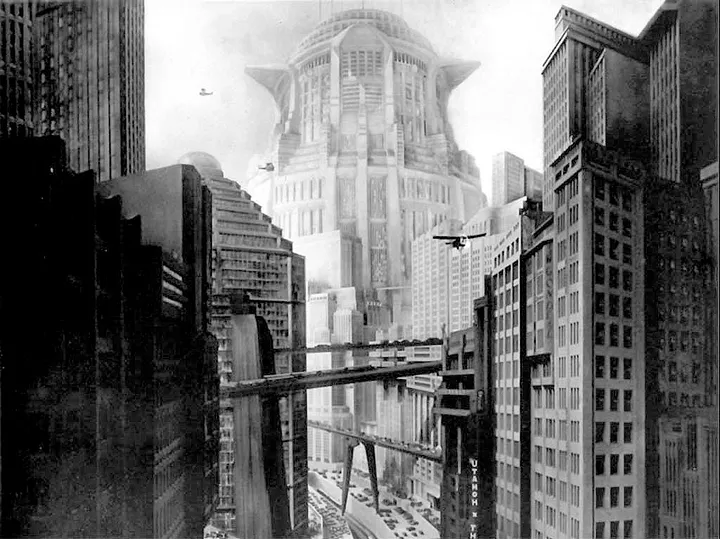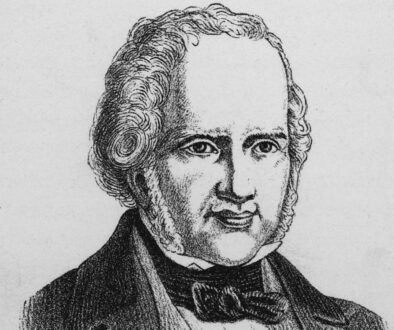The Decline of the West by Oswald Spengler
The Decline of the West is a monumental and prophetic work in two volumes by German philosopher Oswald Spengler. It was first published a century ago, and it contains countless incredibly accurate predictions about our present time. It’s a mind-blowing analysis of what we’re living through right now.
Spengler’s aim was to reveal the fate of Western civilisation by exploring recurring themes and trends throughout history. He breaks with the linear view of human history characteristic of Hegel and Marx. Instead, he conceptualises history as a collection of cultures that all function as independent organisms. Although these organisms are quite different from each other, they all have various important features in common. Their lifespan is roughly a thousand years, and they all go through the same stages: birth, growth, maturity, decline and eventual death.

Cultures are born like living beings, then unfold, reach the highest point of their development, and finally begin to decline and perish. There are no exceptions to this rule: European culture will perish just like the ancient Egyptian, Greek, Persian and Roman cultures perished.
Spengler defines Western culture as Faustian, referencing Goethe, whom he admired. The most distinctive feature of this culture is a desire to experience distance and infinity. This urge can be traced in all activities of Western man, and he’s moving towards an extreme that’s threatening his existence.
Examples of the Western soul seeking distance and infinity include the long journeys of Viking sailors who made it all the way to America, the crusades, various geographical discoveries, the application of spatial perspective in art, the sky-shattering arches of Gothic architecture, the invention of the telescope, the invention of multiple-barrel firearms and the invention of all modern means of transport. Other items we could add to the list from more recent history are skyscrapers, the conquest of cosmic space and the control of cyberspace.

However, every culture has a discernible trajectory. Once it has reached the peak of its development and unravelled its inherent potential — in the case of Faustian culture, the great artistic and scientific achievements of the late 18th and early 19th centuries –, the decline will inevitably occur. Spengler refers to the final, declining phase as civilisation, unlike most other authors, who use ‘culture’ and ‘civilisation’ interchangeably.
He postulates that the same phenomena and events tend to occur during the civilisational phase of every cultural cycle. In the Faustian culture, the transition to civilisation began politically with the French Revolution and Napoleon, and in an economic sense with the Industrial Revolution and modern manufacturing.
During the cultural phase, the emphasis falls on spiritual achievements, such as art, philosophy, religion and, partially, science. In the later civilisation, on the other hand, technology, law, politics and economics come to the fore. Whereas in the phase of culture, man constructs himself inwardly and organically, the man of civilisation expands outwards and increasingly sees the world as a prey to be conquered.
Civilisations also have distinct phases. In the first phase, hierarchy seemingly breaks down and democracy and mass society are born. Democracy then gives way to Caesarism: the age of strong, authoritarian leaders.
A hundred years ago, Spengler already saw that the former organic development of the West was crumbling. The Faustian civilisational period has a mechanical character, defined by externality and artificiality. This is exemplified by the dynamics of urban development: while the towns and cities of the early period of culture were organically connected to the surrounding countryside, in the period of civilisation, they’ve become condensed megalopolises. These world-cities dominate entire continents, reducing all that’s outside them to subordinate provinces.
The modern megalopolis is a striking example of a fossilised civilisation. Made of stone and concrete, world-cities are no longer inhabited by a nation, but by an inorganic mass deprived of its identity. The inhabitant of the megalopolis is the modern neo-nomad, who perceives any megalopolis on the globe as his own, but feels like an alien in a nearby small town or village.

A picture from Fritz Lang’s ‘Metropolis’ (1927)
Hallmarks of the “late” man of the megalopolis are a cool sense of fact, pragmatism, a scientific outlook and a detachment from metaphysical needs. The natural rhythm of life is extinct. Existence is ruled by the intellect.
As a result, megalopolitan man lives in a constant state of tension, because “intelligence is only the capacity for understanding at high tension”. And, so as not to go crazy in this incessant tension, he attempts to counteract it with artificial and superficial forms of relaxation and entertainment, often manifested in mindless hedonism. Spengler writes:
“The relief of hard, intensive brain-work by its opposite — conscious and practised fooling — of intellectual tension by the bodily tension of sport, of bodily tension by the sensual straining after “pleasure” and the spiritual straining after the “excitements” of betting and competitions, of the pure logic of the day’s work by a consciously enjoyed mysticism — all this is common to the world-cities of all the Civilisations.”
The world-city intellect permeates all areas of life. The megalopolitan artist or philosopher doesn’t create anything original — he merely constructs and reinterprets. He lacks true creative power. His mind resembles infertile land.

Infertility can also be seen in biological terms. At first, the population of the civilisational city rises excessively, but then the birth rate drops dramatically. Immigrants usually compensate for this. Spengler sees this phenomenon as “metaphysical death”. He writes:
“The last man of the world-city no longer wants to live — he may cling to life as an individual, but as a type, as an aggregate, no, for it is a characteristic of this collective existence that it eliminates the terror of death. That which strikes the true peasant with a deep and inexplicable fear, the notion that the family and the name may be extinguished, has now lost its meaning. The continuance of the blood-relation in the visible world is no longer a duty of the blood, and the destiny of being the last of the line is no longer felt as a doom. Children do not happen, not because children have become impossible, but principally because intelligence at the peak of intensity can no longer find any reason for their existence.”
The explanation for this process is that the superpowered intellect eventually devours the life force. Life, as in the essence of existence, is at odds with reason. The rational mind finds no value in the primordial reality of life. The infinite, mechanical pragmatism of individualised intellect and technology undermines life itself.
Carl Jung summed up this phenomenon when he wrote, “the intellect usurps the seat where once the spirit was enthroned”.
The prognosis outlined in The Decline of the West is gloomy, but it can help us make sense of history and our current era. It can also help us understand why so many people in other parts of the world are critical and suspicious of the Western way of life and reject it wholeheartedly.
It may not give us much hope with regards to the future of our civilisation, but it contains immense wisdom, which is worth becoming acquainted with for its own sake. It’s beautifully written; it’s not a dry work of philosophy, but it often reads like poetry. It sits superbly at the intersection of science and art.
Amy Balog



